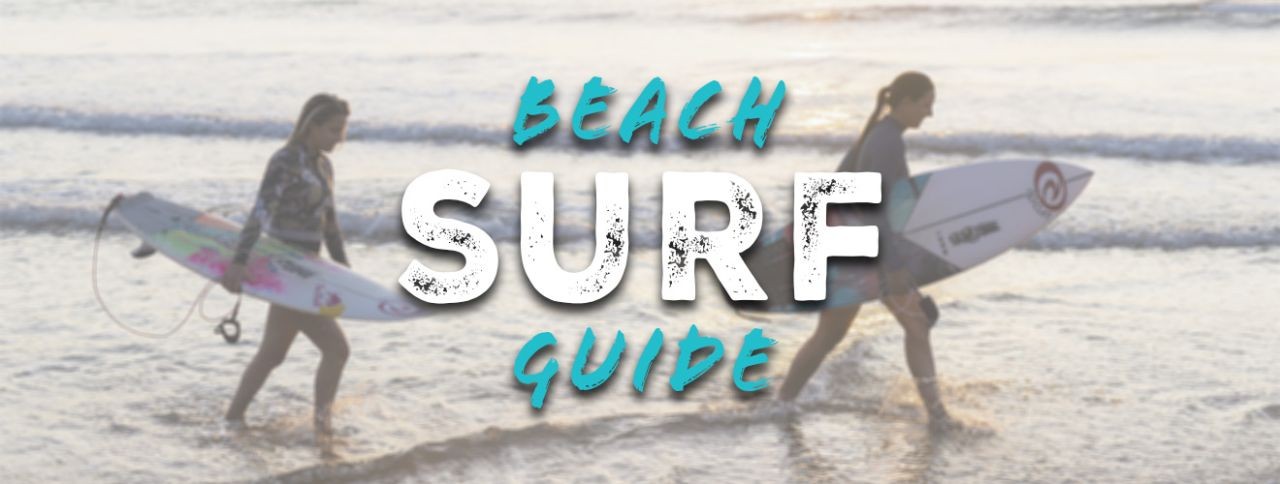Surf Beach Guide
This blog will guide you to a few of the most popular surf beaches along our local coastline here in Wales.
It's always super exciting when you've got a little surf trip planned but can be intimidating if you've never been to the spot before, not knowing about the dangers for example rips, rocks, tide times and even if some of the locals are happy sharing waves. So read on for a little info on some of our top surf beaches
REST BAY

Rest Bay is the most popular beach to visit being so close to the M4. It is a southwest-facing beach and the most consistent surf beach in South Wales.
A slipway along the Lifeguard Station leads you onto the sandy beach. It is best to surf more to the right of the slipway (looking towards the ocean) and not next to the headland rocks on the East side (to your left looking at the ocean)
On a day with conditions in favour, it can be an enjoyable surf but there are some important factors you should know before your visit if you're not sure.
Tide Times: A rule of thumb for Rest Bay is it is safer to finish your surf and start to make your way to the slipway to safely exit the water approximately 2 hours before high tide time. The same if the surf is big enough, you can safely start to surf on the dropping tide, 2 hours after high tide time when it will be coming away from the rocks and the sand can be visible. Rest Bay can work at low tide but only if there is big enough swell.
Rips: Be aware, that when the water is up near the rocks, there is a rip on the left side of the slipway (looking toward the ocean) near the rocks that can take you out and around the headland towards town. There are also lateral currents that you will feel when you are in the water so always look around and be aware of where you are positioned in the water. Pick a landmark on land as a guide to stay in front of. Most use the Lifeguard station as a spot.
Crowds: Especially on weekends or holidays during the warmer months if the surf is up, it can get very busy in the water so keep your eyes up and remember to follow the surfing etiquette.
You can also view the Surf Cam to see live conditions of Rest Bay courtesy of Porthcawl Surf School.
Rocks: As mentioned before when the tide is coming in, be aware of the sand beach disappearing and the waves start hitting the rocks. When the tide is right up it will be covering the bottom of the slipway. If you find yourself still in the water and you cannot see the sand, try and paddle in line with the slipway and time yourself with the waves to exit as safely as you can. Never face your back to the incoming waves when exiting, always keep a look at what the waves are doing.
The locals are friendly here, just make sure you respect the surf etiquette code and everyone stays happy and in one piece.
CONEY BEACH
Coney Beach is right in front of the Fairground in Porthcawl. It produces a wave that is more suited to beginners because it is South East facing it is often sheltered from Westerly winds and big swells so can be the spot to surf during the Winter stormy months for all surfers. The wave will be a lot smaller here but cleaner when Rest Bay is blown out by strong Westerly winds but does tend to close out, especially on the bigger sets.
The harbour wall is to your right (looking at the ocean) and the closer you are to the wall but not too close, the smaller the waves will be.
It is best to surf Coney Beach mid to high tide and sometimes on the drop for an hour if there is a big enough swell.
Hazards include a rip close, along the harbour wall. There are also rocks at the other end of the beach near the point/headland. It is not advised for beginners to be at the rocky end of the beach, where the waves will also be a little bigger. There is also a rip near these rocks which can take you out and around the point, so be aware.
Low tide is best avoided as there is a rip that takes you from the pier towards the rocks in front of the headland.
Crowds: Coney can get very busy with all levels of surfers on some days, so make sure you know your surf etiquette and stay aware of everyone around you. The locals will likely be the same as Rest Bay so as long as you stay safe and respect everyone in the water, there'll be no dramas.
OGMORE-BY-SEA

Image by Rob MC www.surf-forecast.com
Ogmore-By-Sea is another surf beach in the area with a picturesque backdrop of Merthyr Mawr sand dunes and Ogmore River.
It is fairly inconsistent but can produce quality waves when conditions are right. It is best surfed at low tide when more of the sandy bottom beach is exposed and suited to all abilities until mid to 3/4 tide. Access to the beach is from the slipway just below the big pay and display car park. This is where you can safely exit the beach when the tide nears the rocks.
It is Lifeguarded through the summer months.
Hazards: There is a heavy rip flowing from the river mouth when the tide is high, it can take you very quickly out to sea. At this time of the tide, it is an absolute no-go for beginners/intermediates and only for advanced/expert surfers.
If you do find you are stuck on the other side of the river when the tide has come up, you will have to start to paddle close to the river mouth diagonally to get across and to the slipway. We cannot stress enough, that it is a hazardous place to be at the wrong time. There have been counterless rescues done here by Porthcawl RNLI, some have ended in fatalities.
Pollution: After heavy rainfall, there are often agricultural run-offs into the river which unfortunately end up in the sea and can cause illnesses, ear infections etc So be aware.
LLANGENNITH BEACH
Travelling a bit further West, you'll find the most well-known, iconic beach on Gower, Llangennith Beach - a whopping 5km stretch of sandy bottom beach. Suited to all levels of surfers. You can stay at Hillend Campsite or park for the day in the car park.
It is renowned for its paddle-out on big surf days as the waves will be continuously rolling in against tiny surfing humans. It is west-facing and picks up any swell any time of the year so is fairly consistent but like Rest Bay, can be blown out by Westerly winds. It is often bigger than Rest Bay and packs a punch on those big days. It can be surfed all through the dropping and incoming tides.
Because of its size, there is always a spot to surf but again it can get a little busy in the summer months with it being the favourite for any kind of surf when other beaches are almost flat.
Hazards: As with all beaches and the unpredictability of Mother Nature, there can be rips anywhere along the beach. Because of the huge Winter storms and tides, the sand can shift about, changing the banks and conditions can change from day to day. Always stay aware in the water of where you are to avoid being caught out.
Weaver Fish: Llangennith is known for weaver fish during the warmer months, especially at low tide so it;'s best to scuffle your feet whilst in the shallow water until you get into about a foot of water. Although not fatal, the stinger is quite painful so if you think (you'll know) you've squashed one, head back to the campsite where the staff can assist you and ease the pain. Some people (usually people who have stood on one before) wear neoprene boots for protection all summer.
The locals are friendly and will be happy to help you if you have any queries about the beach but again, remember to respect them and stay clued up with surf etiquette in the water.
Llangennith Beach is not officially lifeguarded in the summer but it is Voluntarily on watch out by local Lifeguards on some weekends through the school holidays or busy months.
Shipwrecks: If you are surfing the south end of the beach, nearer to Rhossili, be aware of the shipwreck of Helvetia, she will be partly submerged towards high tide.
For tide times and forecasts, you can also check Surfline. Here you can see detailed forecasts and some surf cams before you begin your trip.
For any emergencies, dial 999 and ask for the coastguard. It is advised to take your phone in a waterproof phone cover in the water with you, should you need to use it.
Find some important information about rip currents from the RNLI website here
You can find out more about safe local beaches from the RNLI website Find My Nearest Lifeguarded Beach
Related Posts
By accepting you will be accessing a service provided by a third-party external to https://www.escape-watersports.co.uk/





